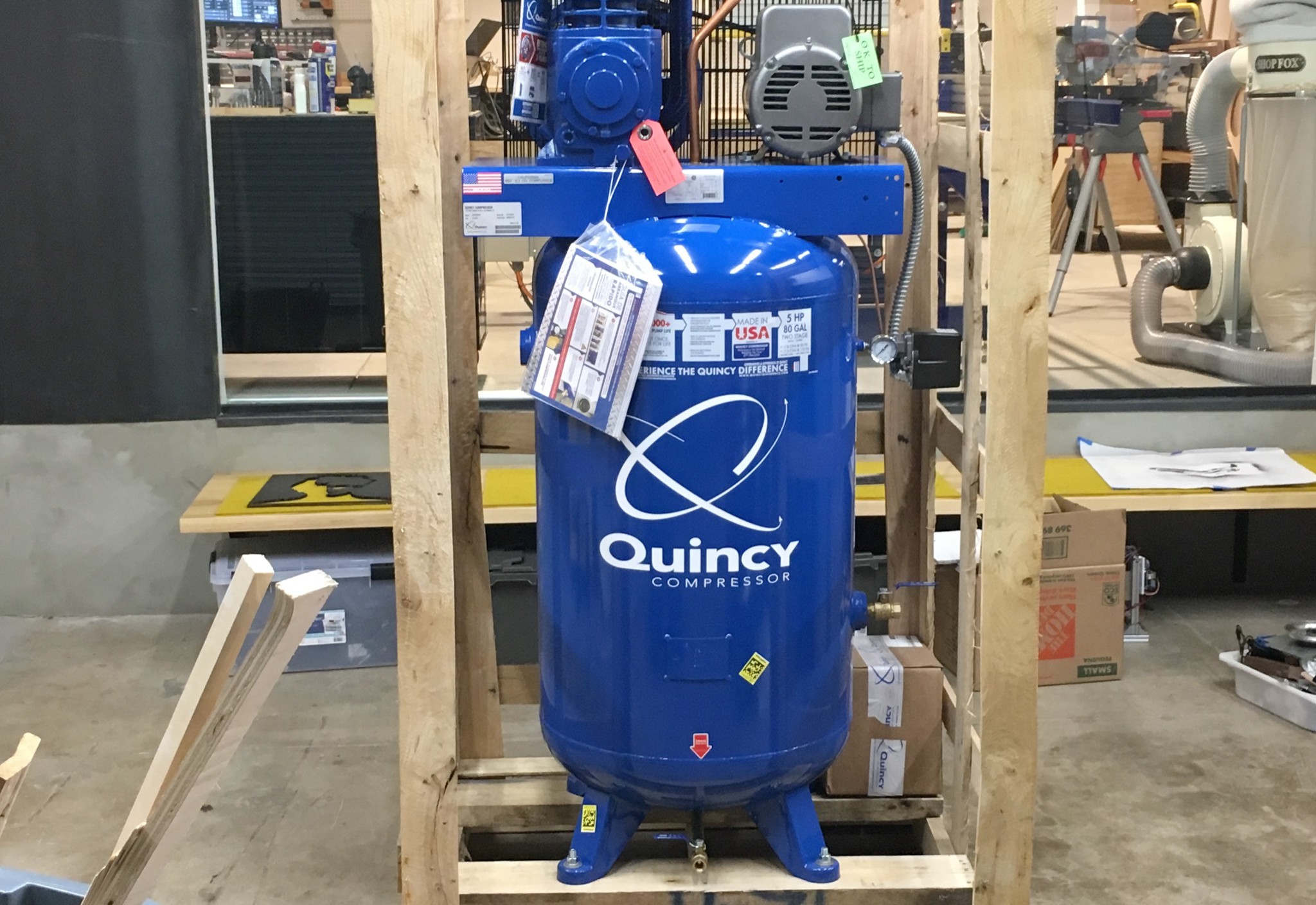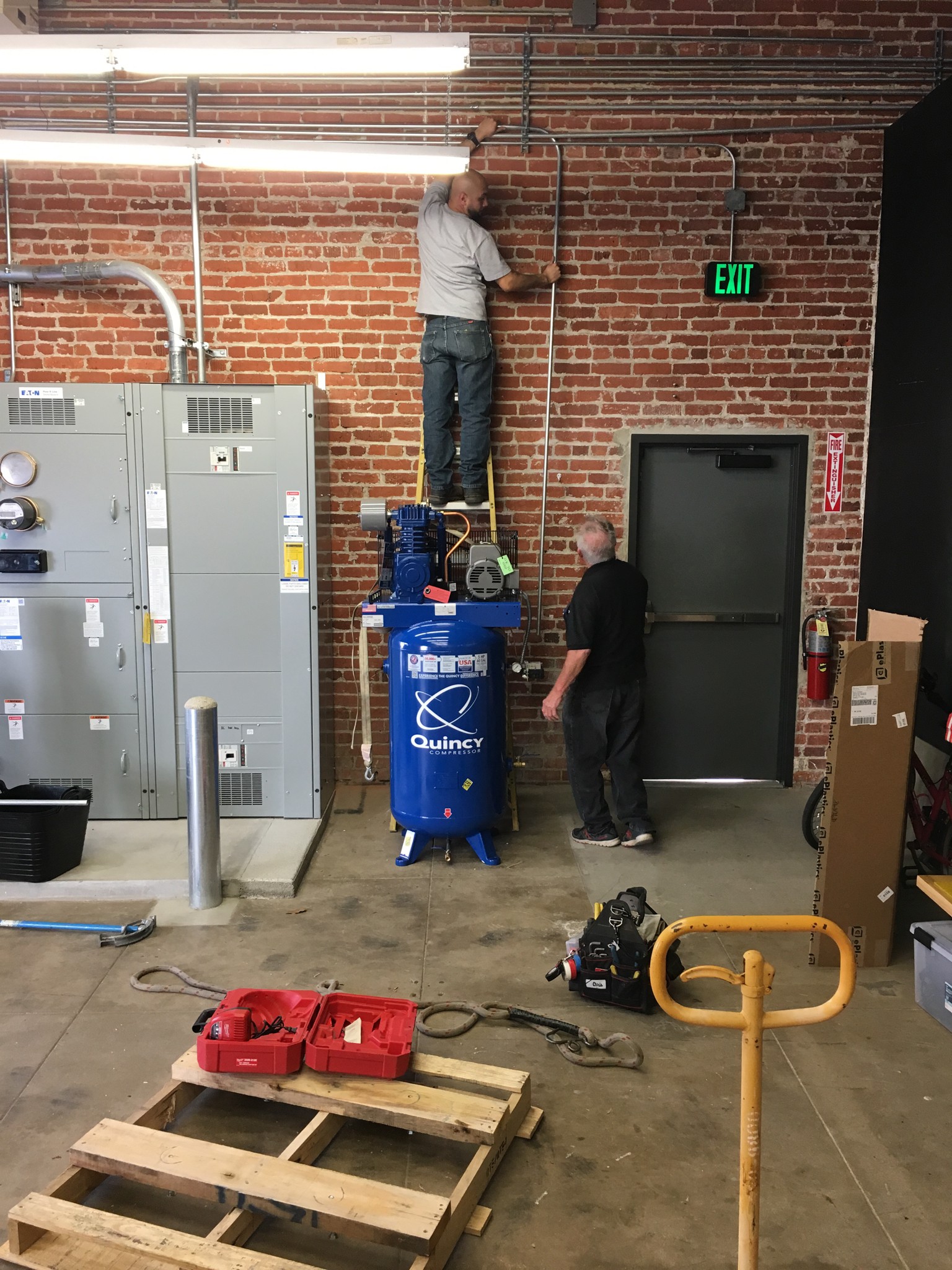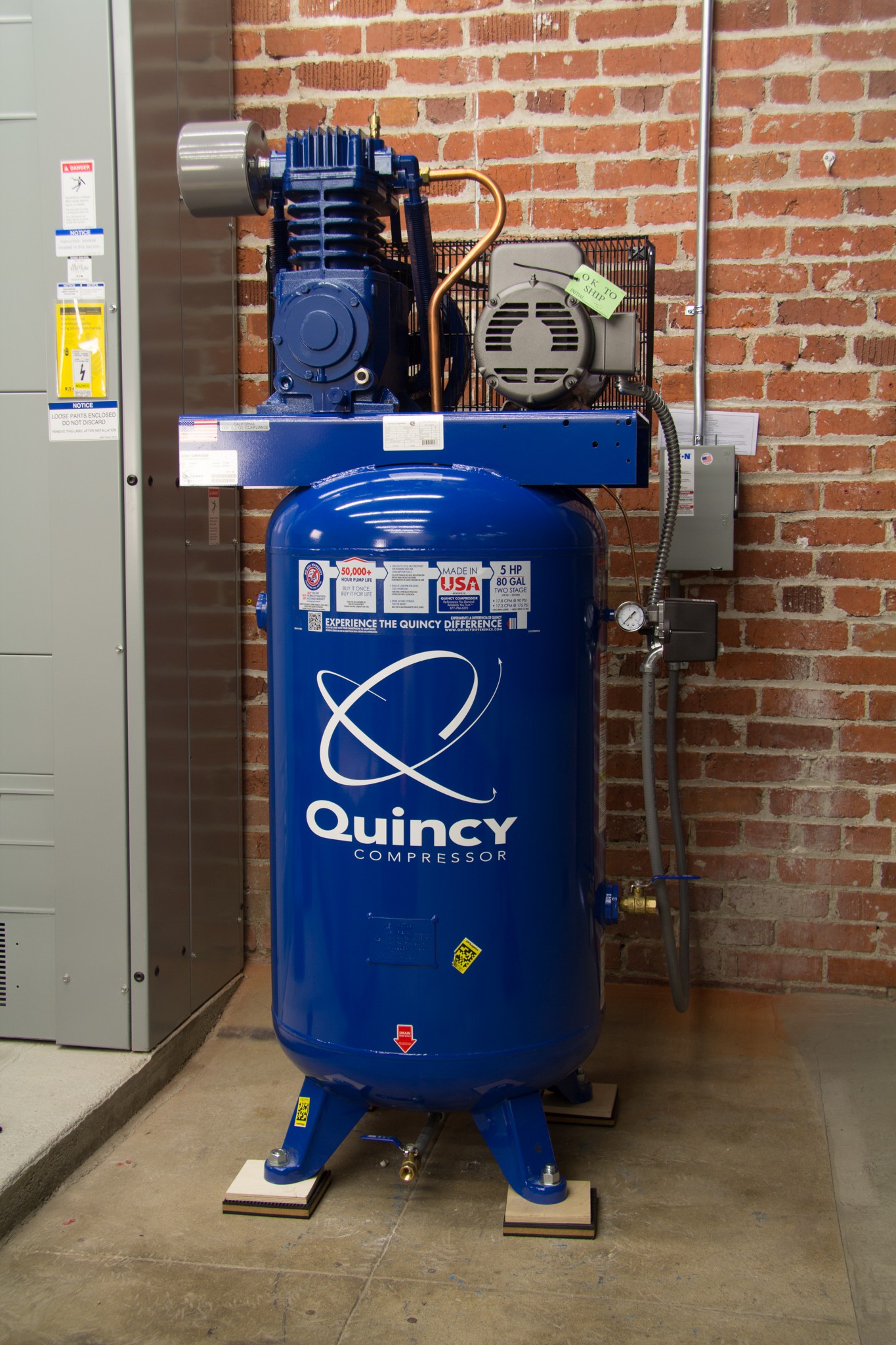An injection molding machine isn't much good without the compressed air that makes it run. The spec for the Morgan G-125T is...
The minimum compressor required to adequately operate a Morgan-Press is a one horsepower, two-stage compressor with a 30 gallon holding tank rated to maintain on/off pressures at 120 to 150 psi. The flow rate should be a minimum of one scfm. This is for dedicated usage by one machine. For light duty applications, a smaller compressor with less holding tank may suffice.
It seemed to me that it would make more sense to invest in a proper compressed air system for the lab as a whole, than simply delivering enough air to run the injection molder. At a minimum, I would want to run the injection molder and the FogBuster mist coolant system on our Tormach PCNC1100 simultaneously.
The Morgan needs 150 PSI and the FogBuster needs far lower, 20 PSI, but really, it's not the pressure but the volume of air that they need to chug that could be the problem. Both systems require 1 SCFM (standard cubic feet per minute) to operate correctly, and you really don't want that to bog down when the compressor has to kick on.
Ultimately, after a significant amount of research, I settled on the Quincy QT-5 80 Gallon compressor. The large receiver tank should be sufficient to act as a buffer for having multiple tools running off of the system at the same time, and the 5HP motor is able to generate 17.7 SCFM! I think we'll be fine.
When the thing showed up though... I wasn't quite ready for the size, even though I knew it was coming...


I don't think those pictures really do it justice... it stands 54" tall! I had no idea how I was going to get it off the pallet let alone moved to where I was going to have the electrician hook it up. Fortunately for me, the electrical contractor I've been working with, Larry Butler of Larry Butler Electric, took care of all of it for me. One minute he was looking at it sitting on the pallet, and when I got back from lunch, he had it moved over to the wall and was getting the power whip ready for it. Within two days, he had it mounted on vibration dampeners, bolted to the concrete with 3/4" bolts, and hooked up to 208V.


The compressor has a pretty well defined break-in process we have to follow to ensure that the piston ring seal correctly, the belt from the motor to the compressor is correctly tensioned, and that the cylinder heads are appropriately torqued, but after about 10 hours of run time, we should be ready to put it into production.
Next step ... installing the compressed air plumbing.
 Supplyframe DesignLab
Supplyframe DesignLab
Discussions
Become a Hackaday.io Member
Create an account to leave a comment. Already have an account? Log In.